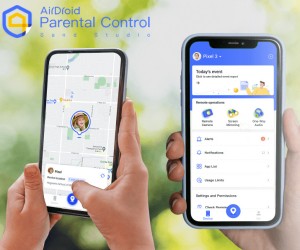Currently, I’ve been specializing in knowledge storytelling and its significance in successfully speaking the outcomes of information evaluation to generate worth. Nonetheless, my technical background, which may be very near the world of information administration and its issues, pushed me to mirror on what knowledge administration wants to make sure you can construct data-driven tales rapidly. I got here to a conclusion that’s usually taken with no consideration however is all the time good to remember. You may’t rely solely on knowledge to construct data-driven tales. It is usually vital for an information administration system to think about at the least two points. Do you need to know which of them? Let’s attempt to discover out on this article.
What we’ll cowl on this article:
- Introducing Knowledge
- Knowledge Administration Techniques
- Knowledge Storytelling
- Knowledge Administration and Knowledge Storytelling
1. Introducing Knowledge
We regularly speak about, use, and generate knowledge. However have you ever puzzled what knowledge is and what sorts of knowledge exist? Let’s attempt to outline it.
Knowledge is uncooked information, numbers, or symbols that may be processed to generate significant data. There are several types of knowledge:
- Structured knowledge is knowledge organized in a set schema, corresponding to SQL or CSV. The primary professionals of the sort of knowledge are that it’s straightforward to derive insights. The primary disadvantage is that schema dependence limits scalability. A database is an instance of the sort of knowledge.
- Semi-structured knowledge is partially organized with no fastened schema, corresponding to JSON XML. The professionals are that they’re extra versatile than structured knowledge. The primary cons is that the meta-level construction might comprise unstructured knowledge. Examples are annotated textual content, corresponding to tweets with hashtags.
- Unstructured knowledge, corresponding to audio, video, and textual content, are usually not annotated. The primary professionals are that they’re unstructured, so it’s straightforward to retailer them. They’re additionally very scalable. Nonetheless, they’re difficult to handle. For instance, it’s tough to extract which means. Plain textual content and digital pictures are examples of unstructured knowledge.
To arrange knowledge whose quantity is growing over time, it’s important to handle them correctly.
2. Knowledge Administration
Knowledge administration is the follow of ingesting, processing, securing, and storing a company’s knowledge, which is then utilized for strategic decision-making to enhance enterprise outcomes [1]. There are three central knowledge administration techniques:
- Knowledge Warehouse
- Knowledge Lake
- Knowledge Lakehouse
2.1 Knowledge Warehouse
A knowledge warehouse can deal with solely structured knowledge post-extraction, transformation, and loading (ETL) processes. As soon as elaborated, the information can be utilized for reporting, dashboarding, or mining. The next determine summarizes the construction of an information warehouse.

Fig. 1: The structure of an information warehouse
The primary issues with knowledge warehouses are:
- Scalability – they aren’t scalable
- Unstructured knowledge – they don’t handle unstructured knowledge
- Actual-time knowledge – they don’t handle real-time knowledge.
2.2 Knowledge Lake
A Knowledge Lake can ingest uncooked knowledge as it’s. Not like an information warehouse, an information lake manages and gives methods to devour or course of structured, semi-structured, and unstructured knowledge. Ingesting uncooked knowledge permits an information lake to ingest historic and real-time knowledge in a uncooked storage system.
The info lake provides a metadata and governance layer, as proven within the following determine, to make the information consumable by the higher layers (reviews, dashboarding, and knowledge mining). The next determine exhibits the structure of an information lake.


Fig. 2: The structure of an information lake
The primary benefit of an information lake is that it may ingest any form of knowledge rapidly because it doesn’t require any preliminary processing. The primary disadvantage of an information lake is that because it ingests uncooked knowledge, it doesn’t assist the semantics and transactions system of the information warehouse.
2.3 Knowledge Lakehouse
Over time, the idea of an information lake has advanced into the information lakehouse, an augmented knowledge lake that features assist for transactions at its high. In follow, an information lakehouse modifies the present knowledge within the knowledge lake, following the information warehouse semantics, as proven within the following determine.


Fig. 3: The structure of an information lakehouse
The info lakehouse ingests the information extracted from operational sources, corresponding to structured, semi-structured, and unstructured knowledge. It gives it to analytics functions, corresponding to reporting, dashboarding, workspaces, and functions. A knowledge lakehouse includes the next primary elements:
- Knowledge lake, which incorporates desk format, file format, and file retailer
- Knowledge science and machine studying layer
- Question engine
- Metadata administration layer
- Knowledge governance layer.
2.4 Generalizing the Knowledge Administration System Structure
The next determine generalizes the information administration system structure.


Fig. 4. The overall structure of an information administration system
A knowledge administration system (knowledge warehouse, knowledge lake, knowledge lakehouse, or no matter) receives knowledge as an enter and generates an output (reviews, dashboards, workspaces, functions, …). The enter is generated by individuals and the output is exploited once more by individuals. Thus, we will say that we have now individuals in enter and other people in output. A knowledge administration system goes from individuals to individuals.
Individuals in enter embrace individuals producing the information, corresponding to individuals carrying sensors, individuals answering surveys, individuals writing a evaluation about one thing, statistics about individuals, and so forth. Individuals in output can belong to one of many following three classes:
- Normal public, whose goal is to be taught one thing or be entertained
- Professionals, who’re technical individuals wanting to grasp knowledge
- Executives who make choices.
On this article, we’ll concentrate on executives since they generate worth.
However what’s worth? The Cambridge Dictionary provides totally different definitions of worth [2].
- The sum of money that may be obtained for one thing
- The significance or value of one thing for somebody
- Values: The beliefs individuals have, particularly about what is correct and mistaken and what’s most vital in life, that management their habits.
If we settle for the definition of worth because the sum of money, a call maker may generate worth for the corporate they work for and not directly for the individuals within the firm and the individuals utilizing the providers or merchandise provided by the corporate. If we settle for the definition of worth because the significance of one thing, the worth is crucial for the individuals producing knowledge and different exterior individuals, as proven within the following determine.


Fig. 5: The method of producing worth
On this state of affairs, correctly and successfully speaking knowledge to decision-makers turns into essential to producing worth. Because of this, your complete knowledge pipeline needs to be designed to speak knowledge to the ultimate viewers (decision-makers) as a way to generate worth.
3. Knowledge Storytelling
There are 3 ways to speak knowledge:
- Knowledge reporting consists of knowledge description, with all the main points of the information exploration and evaluation phases.
- Knowledge presentation selects solely related knowledge and exhibits them to the ultimate viewers in an organized and structured approach.
- Knowledge storytelling builds a narrative on knowledge.
Let’s concentrate on knowledge storytelling. Knowledge Storytelling is speaking the outcomes of an information evaluation course of to an viewers via a narrative. Based mostly in your viewers, you’ll select an acceptable
- Language and Tone: The set of phrases (language) and the emotional expression conveyed via them (tone)
- Context: The extent of particulars so as to add to your story, primarily based on the cultural sensitivity of the viewers
Knowledge Storytelling should think about the information and all of the related data related to knowledge (context). Knowledge context refers back to the background data and pertinent particulars surrounding and describing a dataset. In knowledge pipelines, this knowledge context is saved as metadata [3]. Metadata ought to present solutions to the next:
- Who collected knowledge
- What the information is about
- When the information was collected
- The place the information was collected
- Why the information was collected
- How the information was collected
3.1 The Significance of Metadata
Let’s revisit the information administration pipeline from an information storytelling perspective, which incorporates knowledge and metadata (context)


Fig. 6: The info administration pipeline from the information storytelling perspective
The Knowledge Administration system includes two parts: knowledge administration, the place the primary actor is the information engineer and knowledge evaluation, the place the primary actor is the information scientist.
The info engineer ought to focus not solely on knowledge but in addition on metadata, which helps the information scientist to construct the context round knowledge. There are two sorts of metadata administration techniques:
- Passive Metadata Administration, which aggregates and shops metadata in a static knowledge catalog (e.g., Apache Hive)
- Energetic Metadata Administration, which gives dynamic and real-time metadata (e.g., Apache Atlas)
The info scientist ought to construct the data-driven story.
4. Knowledge Administration and Knowledge Storytelling
Combining Knowledge Administration and Knowledge Storytelling means:
- Contemplating the ultimate individuals who will profit from the information. A Knowledge Administration system goes from individuals to individuals.
- Contemplate metadata, which helps construct probably the most highly effective tales.
If we have a look at your complete knowledge pipeline from the specified end result perspective, we uncover the significance of the individuals behind every step. We are able to generate worth from knowledge provided that we have a look at the individuals behind the information.
Abstract
Congratulations! You could have simply realized how to have a look at Knowledge Administration from the Knowledge Storytelling perspective. You need to think about two points, along with knowledge:
- Individuals behind knowledge
- Metadata, which provides context to your knowledge.
And, past all, always remember individuals! Knowledge storytelling helps you have a look at the tales behind the information!
References
[1] IBM. What’s knowledge administration?
[2] The Cambridge Dictionary. Worth.
[3] Peter Crocker. Information to enhancing knowledge context: who, what, when, the place, why, and the way
Exterior sources
Utilizing Knowledge Storytelling to Flip Knowledge into Worth [talk]
Angelica Lo Duca (Medium) (@alod83) is a researcher on the Institute of Informatics and Telematics of the Nationwide Analysis Council (IIT-CNR) in Pisa, Italy. She is a professor of “Knowledge Journalism” for the Grasp diploma course in Digital Humanities on the College of Pisa. Her analysis pursuits embrace Knowledge Science, Knowledge Evaluation, Textual content Evaluation, Open Knowledge, Internet Purposes, Knowledge Engineering, and Knowledge Journalism, utilized to society, tourism, and cultural heritage. She is the writer of the e-book Comet for Knowledge Science, revealed by Packt Ltd., of the upcoming e-book Knowledge Storytelling in Python Altair and Generative AI, revealed by Manning, and co-author of the upcoming e-book Studying and Working Presto, by O’Reilly Media. Angelica can also be an enthusiastic tech author.





